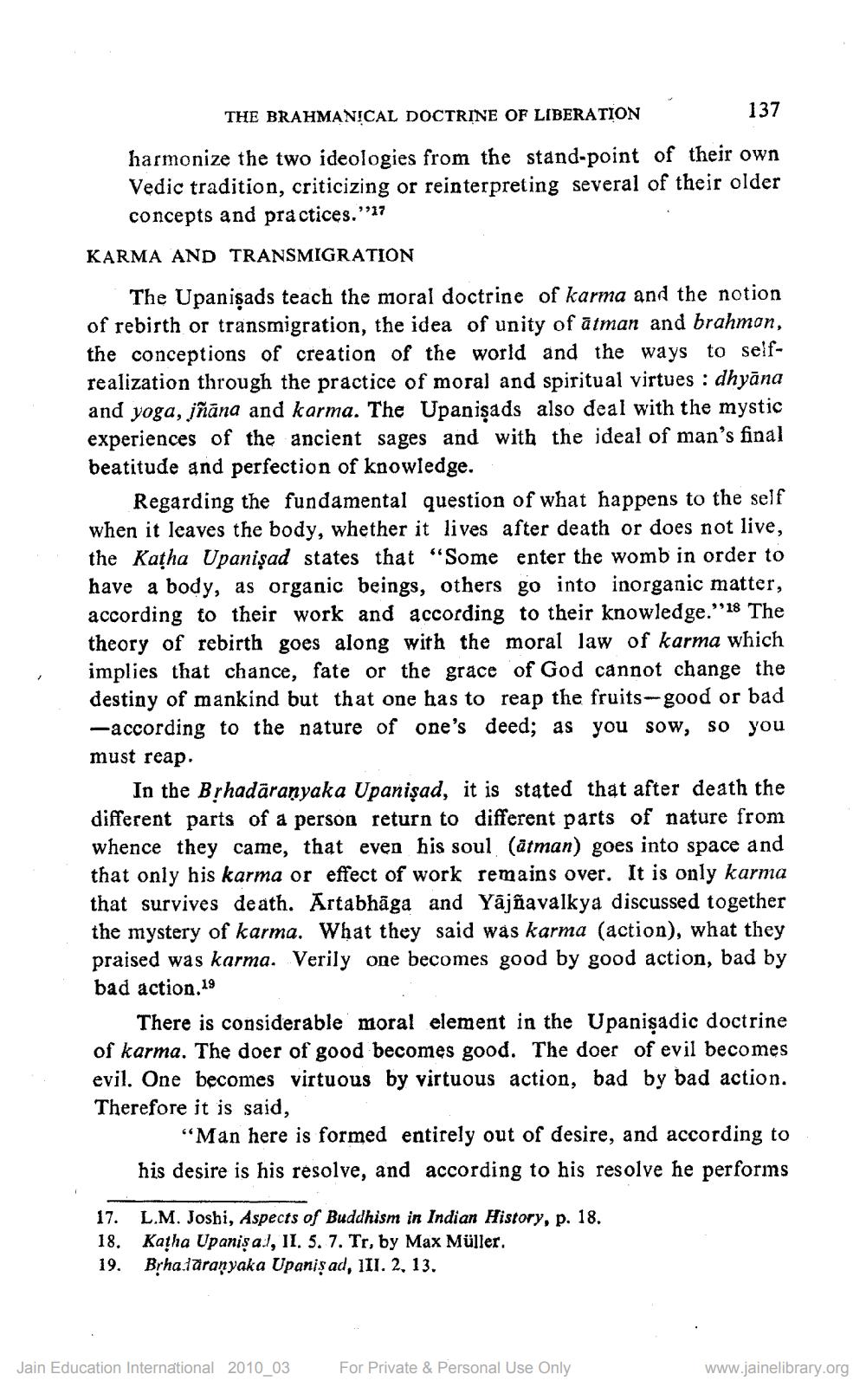________________
THE BRAHMANICAL DOCTRINE OF LIBERATION
137
harmonize the two ideologies from the stand-point of their own Vedic tradition, criticizing or reinterpreting several of their older concepts and practices.''17
KARMA AND TRANSMIGRATION
The Upanişads teach the moral doctrine of karma and the notion of rebirth or transmigration, the idea of unity of atman and brahmon, the conceptions of creation of the world and the ways to selfrealization through the practice of moral and spiritual virtues : dhyāna and yoga, jñāna and karma. The Upanişads also deal with the mystic experiences of the ancient sages and with the ideal of man's final beatitude and perfection of knowledge.
Regarding the fundamental question of what happens to the self when it leaves the body, whether it lives after death or does not live, the Katha Upanişad states that "Some enter the womb in order to have a body, as organic beings, others go into inorganic matter, according to their work and according to their knowledge.”:18 The theory of rebirth goes along with the moral law of karma which implies that chance, fate or the grace of God cannot change the destiny of mankind but that one has to reap the fruits-good or bad -according to the nature of one's deed; as you sow, so you must reap.
In the Brhadāranyaka Upanişad, it is stated that after death the different parts of a person return to different parts of nature from whence they came, that even his soul (atman) goes into space and that only his karma or effect of work remains over. It is only karma that survives death. Artabhāga and Yājñavalkya discussed together the mystery of karma. What they said was karma (action), what they praised was karma. Verily one becomes good by good action, bad by bad action. 19
There is considerable moral element in the Upanisadic doctrine of karma. The doer of good becomes good. The doer of evil becomes evil. One becomes virtuous by virtuous action, bad by bad action. Therefore it is said,
“Man here is formed entirely out of desire, and according to his desire is his resolve, and according to his resolve he performs
17. 18. 19.
L.M. Joshi, Aspects of Buddhism in Indian History, p. 18. Katha Upanişa:1, 11. 5. 7. Tr, by Max Müller. Brha.läranyaka Upaniş ad, 1I1. 2.13.
Jain Education International 2010_03
For Private & Personal Use Only
www.jainelibrary.org




